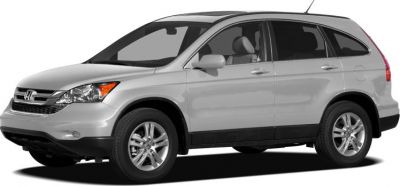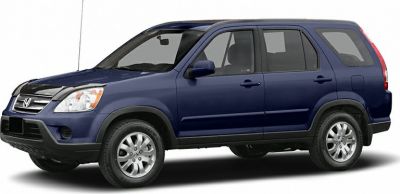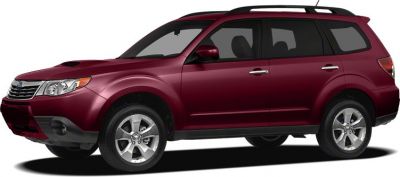 2008 Subaru Forester III Dimensions, Size & Specs
2008 Subaru Forester III Dimensions, Size & SpecsMeasurements of the 2008 Subaru Forester III, engineered for optimal performance and comfort
| Dimensions | |
|---|---|
| Length: | 4485-4560 mm176.6-179.5 in14.7-15.0 ft |
| Width: | 1735-1780 mm68.3-70.1 in5.7-5.8 ft |
| Height: | 1590-1700 mm62.6-66.9 in5.2-5.6 ft |
| Trunk Capacity: | 387 liter13.7 cu ft |
| Weight Specifications | |
| Curb Weight: | 1390-1570 kg3064-3461 lbs |
| Maximal permitted Weight: | 1880-2000 kg4145-4409 lbs |
| Tire Specifications | |
| Rims Size: | 17-inch rims:
|
| Tire Sizes: |
|
The Subaru Forester III, produced between 2007 and 2010 and represented by the 2008 model year, is a compact crossover SUV that strikes a balance between urban driving and off-road capability. This third-generation Forester showcases a more refined and slightly larger body compared to its predecessors, making it versatile and practical for families and adventure enthusiasts alike.
Dimensionally, the Forester III ranges in length from 4485 mm to 4560 mm (about 176.6 to 179.5 inches), offering a spacious cabin without compromising maneuverability. Its width varies between 1735 mm and 1780 mm (68.3 to 70.1 inches), while the height spans between 1590 mm and 1700 mm (62.6 to 66.9 inches), providing good headroom and a commanding driver position.
Weight plays a critical role in the vehicle's dynamic performance and fuel efficiency. The curb weight fluctuates between 1390 kg and 1570 kg (3064 to 3463 lbs), reflecting different trim levels and drivetrain configurations. The maximum weight capacity goes up to 1880 kg to 2000 kg (4144 to 4409 lbs), which includes passengers and cargo.
In terms of cargo, the Forester III offers a luggage capacity of 387 liters (about 13.7 cubic feet), catering well to everyday storage needs and outdoor equipment. Its wheel and tire choices include rim sizes of 7J x 17 inches paired with tire sizes such as 215/60 R16, 225/55 R17, 215/55 R17, and 215/60 R16, enhancing both ride comfort and off-road stability.
Overall, the Subaru Forester III is designed to offer a solid combination of size, weight, and capacity that supports versatile use, whether navigating city streets or exploring rugged terrain. This generation solidified the Forester’s reputation as a reliable, practical, and well-sized SUV choice in its segment.
Discover the standout features that make the 2008 Subaru Forester III a leader in its class
Have a question? Please check our knowledgebase first.
The Subaru Forester III, produced between 2007 and 2010, has a length ranging from 4485 mm to 4560 mm (176.6 to 179.5 inches), a width between 1735 mm and 1780 mm (68.3 to 70.1 inches), and a height that varies from 1590 mm to 1700 mm (62.6 to 66.9 inches). These size variations depend on the specific model trims and optional equipment that might slightly alter the car's stance and dimensions. This mid-sized SUV offers a balanced footprint, which supports both urban driving and off-road capability, making it versatile in different driving environments.
The curb weight of the Subaru Forester III falls between 1390 kg and 1570 kg (3064 to 3463 pounds), with the maximum allowable weight (gross vehicle weight rating) ranging from 1880 kg to 2000 kg (4142 to 4409 pounds). The curb weight denotes the vehicle’s weight without passengers or cargo, while the maximum weight includes the full payload capacity. This weight range supports the Forester's robust engine options and all-wheel drive system, ensuring strong performance, good fuel efficiency, and solid handling characteristics typical of Subaru SUVs designed for both on-road comfort and off-road stability.
The 2008 Subaru Forester III offers a luggage capacity of 387 liters (approximately 13.7 cubic feet) with rear seats in place. This volume is suitable for daily errands, weekend trips, or moderate family travel involving several bags or suitcases. The interior also likely features foldable rear seats, which when lowered, significantly expand cargo capacity for larger items or bulkier loads. This practical luggage space supports the Forester’s role as a versatile family SUV, balancing passenger comfort with reasonable cargo storage.
The Subaru Forester III commonly uses rim sizes of 7J x 17 inches. The tire sizes supported include 215/60 R16, 225/55 R17, 215/55 R17, and 215/60 R16. Different tire and rim combinations can affect ride comfort, handling precision, and off-road capabilities. Tires with larger rims and lower profiles (like 225/55 R17) tend to offer more responsive handling on paved roads but may slightly reduce the cushioned ride and off-road traction compared to higher-profile tires such as the 215/60 R16, which provide better absorption of rough terrain impacts.
Considering the Subaru Forester III's maximum dimensions — up to around 4560 mm (179.5 inches) in length, 1780 mm (70.1 inches) in width, and 1700 mm (66.9 inches) in height — it generally fits comfortably within a standard residential garage. Typical one-car garage dimensions start around 3 meters (10 feet) wide and 6 meters (20 feet) deep, which accommodates the Forester with ample room for opening doors and maneuvering. Height clearance is usually well above 2 meters (6.5 feet) in garages, so the Forester’s height poses no issues. This means it is practical for owners with typical home garage spaces.
Compared to the Forester II (produced from 2002 to 2008), the Forester III (2007-2010) is slightly larger, with increases mainly in length and height to improve interior space and cargo capacity. The Forester III increased length from approximately 4375 mm to up to 4560 mm and evolved in styling and functional design to offer more comfort and better aerodynamics. This size growth translated to enhanced passenger room, especially rear legroom and headroom, plus a more substantial cargo area. The newer generation balanced improved dimensions with Subaru's continued focus on compact SUV agility.
The Subaru Forester III aligns well within the compact crossover SUV segment, with its length, width, and height slightly above average compared to rivals like the Honda CR-V and Toyota RAV4 of its era. Its length of up to 4560 mm (179.5 inches) and width of up to 1780 mm (70.1 inches) provides a slightly larger footprint, offering more interior space while maintaining maneuverability. Its moderate height contributes to a commanding driving position typical for crossovers. These dimensions enable the Forester III to compete effectively by combining recreational utility with family-friendly space.
The Forester III’s increased length and height allow for a more spacious cabin than its predecessors, accommodating five passengers comfortably. Improved headroom and legroom front and rear provide a relaxed seating experience for adults in all seats. The 387-liter (13.7 cubic feet) luggage area meets everyday cargo needs but can be expanded by folding the rear seats flat. The SUV’s boxy design enhances usable interior volume. Coupled with practical storage compartments and good visibility, these dimension-related features contribute significantly to passenger comfort and overall usability.
The Forester III, with its slightly increased size and weight relative to prior versions, balances its dimensions with Subaru’s efficient engine options and symmetrical all-wheel-drive system to maintain commendable fuel efficiency for a compact SUV. Larger dimensions contribute to a more stable and comfortable ride, while the weight range of 1390-1570 kg (3064-3463 lbs) aids traction without excessively compromising fuel economy. The vehicle's aerodynamic design and optimized tire options help reduce drag, ensuring that driving dynamics remain responsive and practical for urban and off-road driving.
Yes, there are modest differences in exterior dimensions between various Forester III trims. Height can vary from 1590 mm (62.6 inches) up to 1700 mm (66.9 inches), reflecting options like roof rails or suspension settings which affect overall profile. Width variations from 1735 mm (68.3 inches) to 1780 mm (70.1 inches) might arise due to wheel arch designs or different tire and wheel combinations offered across trims. These differences allow buyers to select configurations optimized for either a sportier look, enhanced roof cargo capacity, or improved road presence.
Discover similar sized cars.

| Production: | 2009-2012 |
|---|---|
| Model Year: | 2010 |
| Length: | 4555-4574 mm179.3-180.1 in |
| Width: | 2091 mm82.3 in |
| Height: | 1680 mm66.1 in |

| Production: | 2002-2006 |
|---|---|
| Model Year: | 2002 |
| Length: | 4536-4555 mm178.6-179.3 in |
| Width: | 1783 mm70.2 in |
| Height: | 1682-1710 mm66.2-67.3 in |

| Production: | 2021-present |
|---|---|
| Model Year: | 2021 |
| Length: | 4547 mm179.0 in |
| Width: | 2166 mm85.3 in |
| Height: | 1689 mm66.5 in |

| Production: | 2010-2013 |
|---|---|
| Model Year: | 2011 |
| Length: | 4560 mm179.5 in |
| Width: | 1780-1795 mm70.1-70.7 in |
| Height: | 1700 mm66.9 in |
